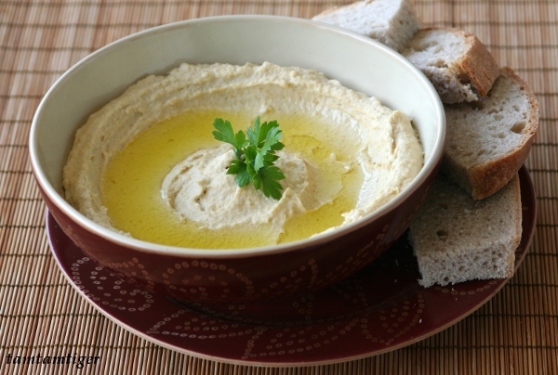The food of the month February (yes, I am a bit behind. What shall I say, three kids don’t leave much time) are sprouts! Its a great way to get some fresh foods and vitamins and it is really fun to make.
My favourites so far are Alfalfa sprouts which are great in salad and on sandwiches, and lentil sprouts which I love as some kind of spiced warm lentil salad.
It is still not clear to me if it is advisable to eat sprouted legumes raw. Beans, lentils and other legumes contain the toxin phytohemagglutinin which is destroyed through cooking – but also soaking and sprouting are ways to destroy the toxin. I am just not sure, if sprouting is enough to remove all toxin, or how much of it is still left. For this reason, I decided to at least saute my sprouted lentils for a few minutes before eating.
I do my sprouting in a glass. I close the glass with a mesh (usually used to make window screens). Key is a good hygiene – the seeds have to be washed and watered twice a day and thoroughly drained, and the glasses and covers have to be well cleaned with warm and soapy water before and after use.
Here is the warm sprouted lentil salad:
You’ll need:
- sprouted lentils (and if you want some sprouted chickpeas)
- olive oil or ghee
- garlic
- turmeric
- soy sauce
- fresh ginger
- some water (or wine) if needed
How to prepare:
- Saute finely chopped garlic together with some turmeric in some olive oil or ghee on low flame for about a minute.
- Ad the sprouted lentils and some soy sauce. Cover and let simmer on low flame for about 10 minutes (if you add chickpeas let them simmer first for 10 minutes before adding the lentils).
- If lentils are too dry add some water (or white wine).
- Add finely grated ginger. Let simmer for 1 minute.
- Add salt to taste.
- Sprincle with fresh parsley or cilantro.
Enjoy!
This post first appeared on tamtamtiger.wordpress.com.


